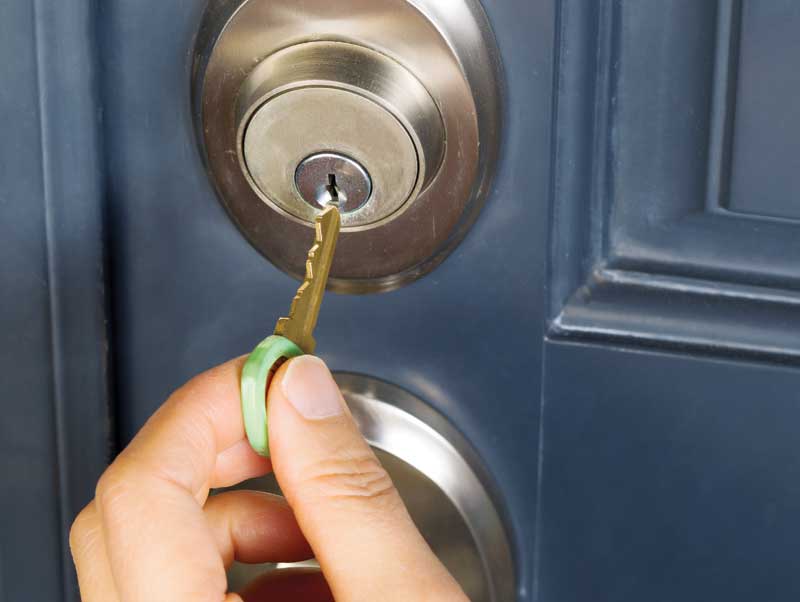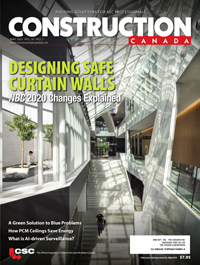Standards for residential hardware raise the bar

Comparison with commercial grades
As mentioned, the tests for residential hardware are similar to those for commercial products, with the exception the commercial ones only receive an overall grade after passing all of the tests in each of the categories. Hence, more choices are available to specifiers of locksets and deadbolts when it comes to single- or multifamily housing. For example, if security is a greater priority to a homeowner than durability or finish, then one might consider purchasing a lockset in which security has received a higher (or equal) rating compared to durability or finish.
It should be noted an A rating in residential standards does not correspond exactly to any grades from the commercial standards. One should consult the standards for both the exact test conditions and the performance requirements (e.g. the number of cycles and forces applied during the testing).
It should also be noted a C rating means the product has passed rigorous testing for that category—an ANSI/BHMA rating sets it apart from products that have not been tested and certified. When properly selected for application, the performance of a product with a C rating will not disappoint—it will perform to expectations and hold up to abuse very well.
Interconnected locks
Local building codes may sometimes mandate interconnected locks for safe egress in multifamily dwellings. An interconnected lock is one that operates the bored lock (or latch) and the deadbolt with one motion. It is a safety feature that allows for quick egress in the case of a fire or other emergency. While interconnected locks are not a requirement in single-family homes, they are mandated by law in multifamily homes in some jurisdictions. It is important to always be up to date with local building codes.
In cases where interconnected locks are required, specifiers should be completely familiar with ANSI/BHMA A156.12, which is suitable for light-commercial applications.
Bored versus mortise locks
Mortise locks are most often used in commercial building applications, although bored locks are also widely employed. While bored locks are most frequently specified for residential applications, it is not uncommon for mortise locks to be specified in residential applications, too, especially for main entrances and upscale residences.
This state of affairs is reflected in the standards. No new residential standard has been developed for mortise locks per se; further, the new residential standards do not cover mortise locks, although some mortise-type deadbolts are covered by ANSI/BHMA A156.40. Specifiers must refer to the existing ANSI/BHMA standard for mortise locks—ANSI/BHMA A156.13. Considering that high-end mortise lock applications will demand the highest level of quality, it may well be redundant to create a separate residential standard for mortise locks.
Comprehensive testing
The residential standards were developed in co-operation with builders hardware manufacturers, testing laboratories, and other stakeholders, and after detailed tests for security, durability, and finish.
For example, there is an array of individual durability tests, including versions that test the bolt in various unloaded and preloaded configurations, the chassis, the cylinder and keyway, and various other components of the lockset. These durability tests include force, torque, and cycle tests. To receive a rating in durability, the lockset must meet the requirements set forth in the standard for each durability test.
Similarly, many different security strength and destructive tests are aimed at forcibly defeating the locking mechanism using various torque, axial, and vertical loads. Again, the lockset must meet the requirements for every one of these tests to receive the appropriate rating (A, B, or C) with respect to security strength. The finish tests include neutral salt-spray, humidity, point hardness, perspiration, and ultraviolet (UV) light and condensation tests.
Fortunately for testing laboratories, the same testing fixtures in use for existing standards also can be used for the new residential standards (See “Testing Fixtures for Residential Locksets and Latches,” page 54). The main differences between the standards are the requirements for making the Grade (i.e. Grades 1, 2, or 3 for existing standards versus Grades A, B, or C for the new residential standards). While one might see this as BHMA ‘lowering the standard’ for residential applications, it is more accurate to say the association is accurately matching the quality level with light-duty applications. A commercial Grade 1 or even a Grade 2 level of quality would be overspecified for most residential applications.
The cycle and load requirements for residential grades are a lot less stringent than for commercial applications, yet they are very rigorous when compared to inferior products sold in the marketplace. Therefore, even a Grade C is a mark of quality and far superior to untested products.
A full appreciation of the scope of testing can be obtained through reference to the original standards. They also provide precise definitions of all the nomenclature, as well as drawings and descriptions of various types and functionality of residential locksets and latches (A156.39) and residential deadbolts (A156.40).





